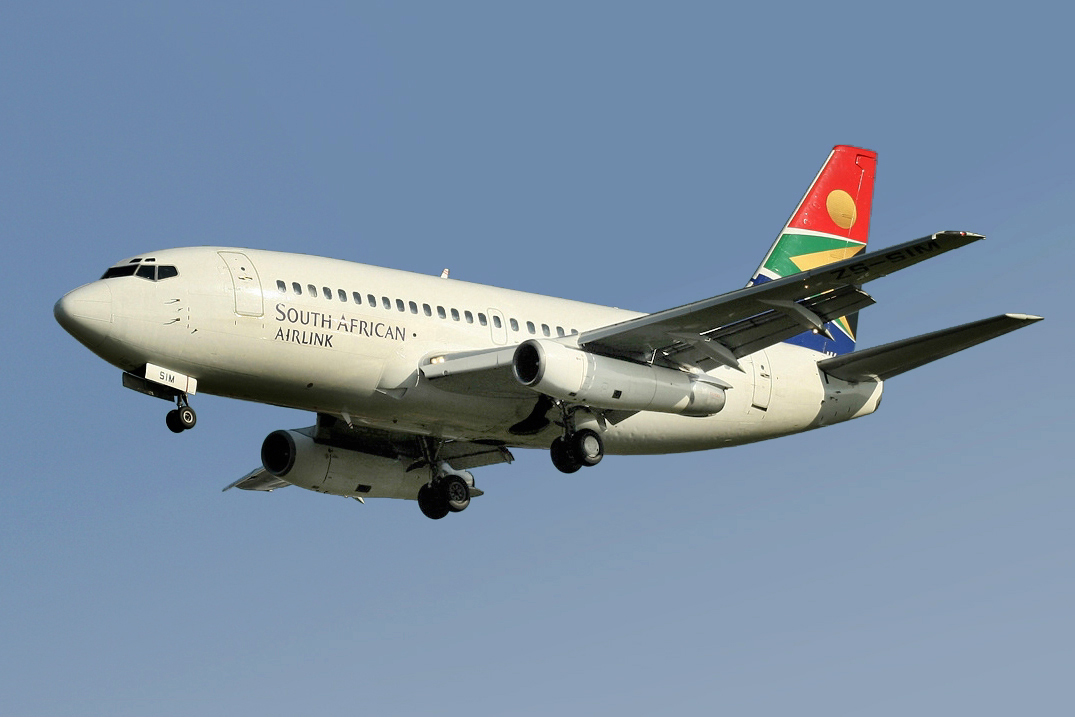Boeing 737-200
Seats
119
Maximum Range (nm)
2592
ICAO Code
B732

Boeing 737-200
Introduction
The Boeing 737-200 is the second variant of the legendary Boeing 737 family and a pioneer in short-to-medium haul jet service. Introduced in the late 1960s, it gained popularity for its rugged design, reliable performance, and ability to operate from shorter runways. Known for its versatility and durability, many 737-200s remain in service today, especially in cargo, combi, and charter roles. Despite being an older aircraft, its proven design and flexible configuration options make it a viable solution for certain charter operations.
Specification of Boeing 737-200
Manufacturer: Boeing (USA)
Model: 737-200
Crew: 2 pilots + 3 to 4 cabin crew
Passenger Capacity:
Typical: 100–130 passengersEngines: 2 × Pratt & Whitney JT8D-9A or similar turbofan engines
Length: 30.53 m (100 ft 1 in)
Wingspan: 28.35 m (93 ft 0 in)
Height: 11.3 m (37 ft 4 in)
Maximum Takeoff Weight (MTOW): 52,390 kg (115,500 lbs)
Cargo Volume: Approx. 110 m³ (3,885 ft³) in combi/freighter versions
Performance and Range of Boeing 737-200
Despite its age, the Boeing 737-200 offers solid performance for regional routes:
Cruise Speed: 780 km/h (420 knots)
Maximum Range: 3,500 km (1,900 nautical miles)
Service Ceiling: 35,000 ft
Takeoff Distance: Approx. 2,000 m (6,561 ft)
Landing Distance: Approx. 1,600 m (5,250 ft)
It’s especially suitable for routes of 1–3 hours in duration, including operations from semi-prepared or gravel runways with the gravel kit option.
Cabin Comfort and Interior of Boeing 737-200
While older in design, the Boeing 737-200 still offers functional passenger comfort:
Cabin Width: 3.54 m (11 ft 7 in)
Cabin Height: 2.13 m (7 ft)
Typical Layout: 3-3 seating with economy or mixed-class configuration
Lavatories: 2 (1 forward, 1 aft)
Galleys: Forward and rear service areas
Cabin Features:
Basic overhead storage bins
Modest seat pitch in standard layouts
Available VIP layouts with recliners, lounge seating, or tables
Many 737-200s in charter service have upgraded interiors, refurbished seating, and noise insulation for enhanced comfort.
Avionics and Technology of Boeing 737-200
The Boeing 737-200 originally came with analog instruments, but many aircraft have been retrofitted:
Flight Deck: Traditional analog gauges (some upgraded to EFIS or glass cockpits)
Navigation Systems: VOR/DME, ADF, ILS, and GPS (on upgraded units)
Autopilot: Basic autopilot systems capable of ILS approach
Optional Upgrades: ADS-B, digital FMS, TCAS, and satellite tracking in modernized versions
While not as advanced as newer jets, the 737-200 remains a reliable platform with strong support.
Operational Advantages of Boeing 737-200
The 737-200 brings several distinct advantages to charter operators:
Rugged Landing Gear: Capable of gravel and rough field operations with optional gravel kit
High Payload: Suitable for passenger, cargo, or combi configurations
Proven Durability: Operates reliably in extreme climates and remote areas
Flexible Cabin Configurations: Convertible to all-cargo, quick-change, or VIP layouts
Well-Supported: Strong global maintenance and parts availability
Its versatility makes it ideal for missions where newer aircraft may not be practical.
Who Should Charter a Boeing 737-200
The Boeing 737-200 is well-suited for:
Remote Charter Flights: Serving regions with limited infrastructure
Cargo and Combi Operations: Freight, mail, and mixed passenger/cargo missions
Government or Military Transport: Rugged, reliable airlift capacity
Oil, Gas & Mining Charters: Moving crews to and from remote job sites
Group Travel: Corporate events, sports teams, or tour groups on short-haul routes
The aircraft is also used in VIP charter configurations in select markets.
Charter Cost Estimates for Boeing 737-200
Charter rates for the Boeing 737-200 are competitive due to its operating cost efficiency:
Hourly Charter Rate: $4,000 – $6,000 USD
Typical Regional Charter (1.5–3 hours): $10,000 – $18,000 USD
Estimated Cost per Passenger (Full Load): $90 – $140 USD
VIP or combi configurations may carry a premium depending on customization and cargo needs.
Conclusion
The Boeing 737-200 is a robust and versatile workhorse that continues to serve charter operators around the world. Its ability to carry up to 130 passengers, operate from challenging airstrips, and adapt to multiple mission profiles makes it a reliable option for regional travel, cargo, or remote access. While not as modern as newer narrow-body jets, the 737-200 remains a charter asset for those who need utility, performance, and durability.
